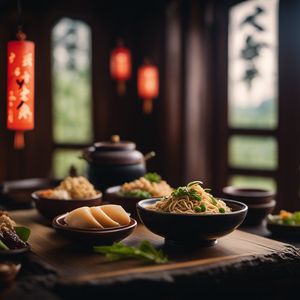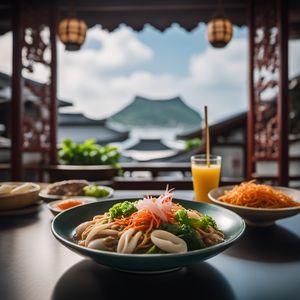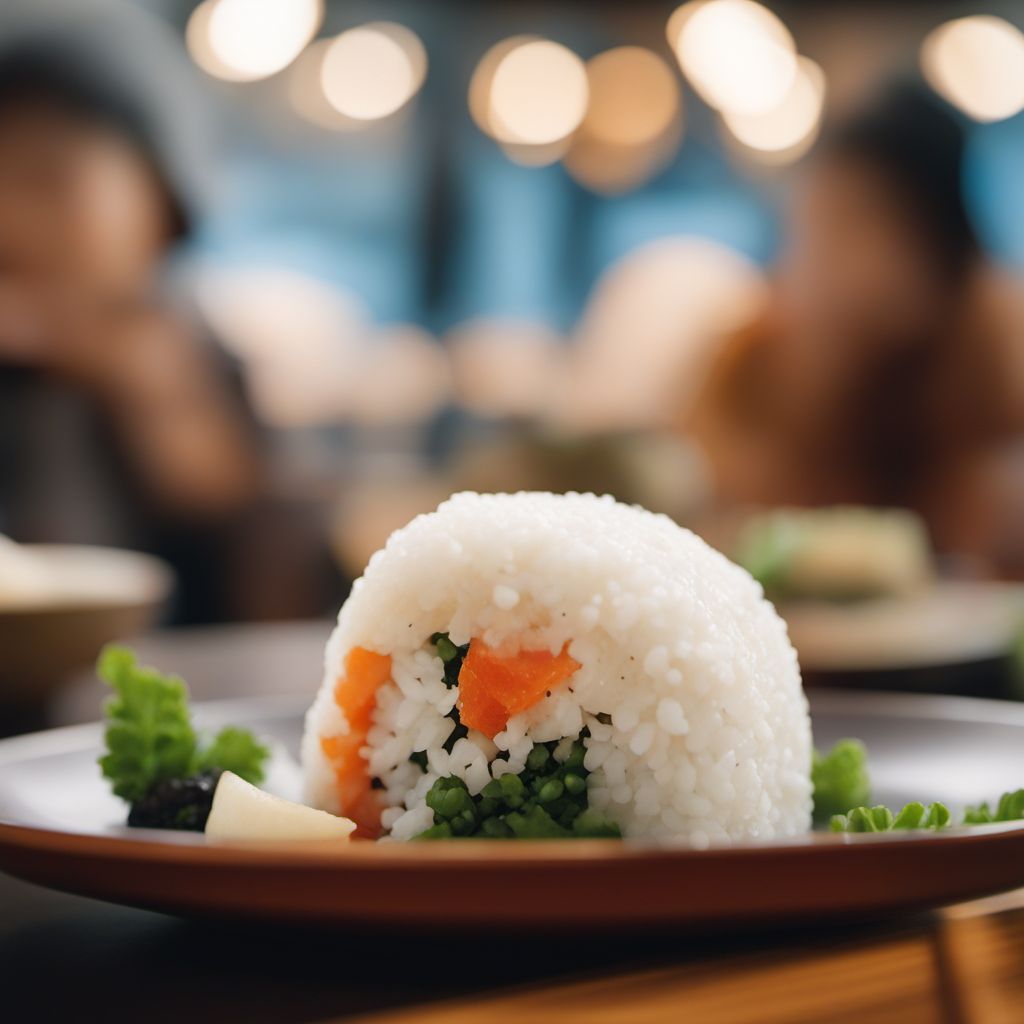
Dish
Onigiri
Onigiri is made by shaping cooked rice into a triangle or ball shape and filling it with a small amount of filling. The rice is often seasoned with salt or furikake, a Japanese seasoning blend. Onigiri can be eaten on its own or as part of a meal. It is a convenient and portable food that is easy to make and eat on the go.
Origins and history
Onigiri has been a popular food in Japan for centuries and is often associated with samurai culture. It was originally made as a portable and easy-to-eat food for travelers and soldiers. Today, it is a staple in Japanese cuisine and can be found in many different variations.
Dietary considerations
Onigiri is naturally gluten-free and can be made vegan or vegetarian depending on the filling. However, some fillings may contain allergens such as fish or soy.
Variations
Onigiri can be made with a variety of fillings such as umeboshi (pickled plum), salmon, tuna, or kombu (dried seaweed). It can also be wrapped in nori (dried seaweed) or coated in sesame seeds.
Presentation and garnishing
Onigiri can be decorated with nori cutouts or shaped into different shapes such as hearts or stars. It can also be wrapped in decorative paper or placed in a bento box for presentation.
Tips & Tricks
To prevent the rice from sticking to your hands, wet your hands with water before shaping the onigiri. Use a plastic wrap or onigiri mold to make the shaping process easier.
Side-dishes
Onigiri can be served with miso soup, pickled vegetables, or edamame. It can also be part of a bento box or served as a snack on its own.
Drink pairings
Green tea or sake are popular drink pairings with onigiri.
Delicious Onigiri recipes
More dishes from this category... Browse all »
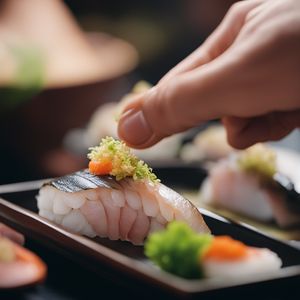
Aji nigiri sushi
Japanese cuisine

Akami nigiri sushi
Japanese cuisine

Anago nigiri sushi
Japanese cuisine
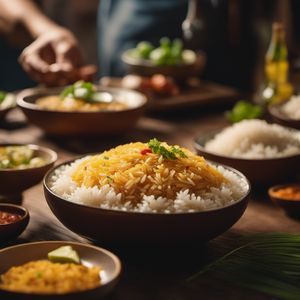
Arroz a la plancha
Spanish cuisine

Arroz a la tumbada
Mexican cuisine

Arroz al forn
Spanish cuisine

Arroz al jerez
Spanish cuisine

Arroz al olivar
Spanish cuisine


